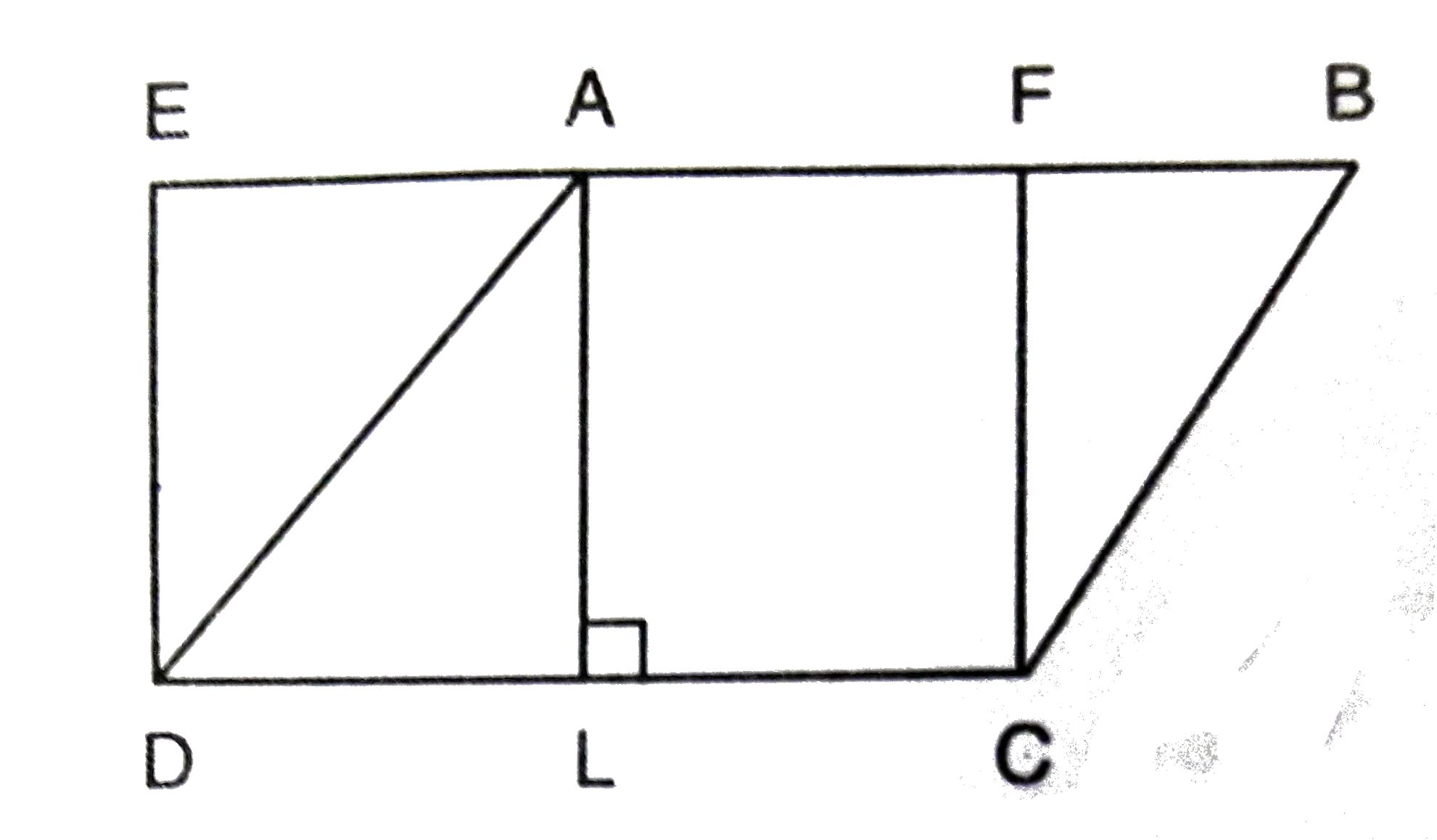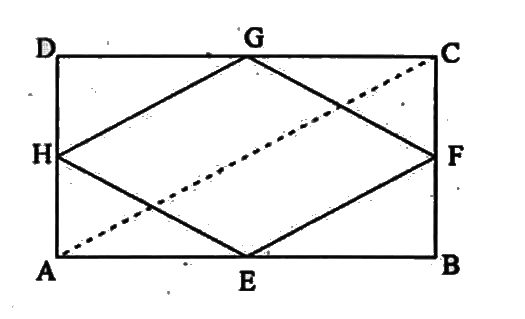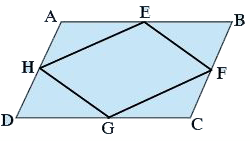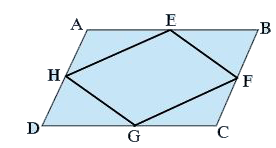यदि E, F, G और H क्रमशः समान्तर चतुर्भुज ABCD की भुजाओं के मध्य-बिन्दु हों तो ar(EFGH)=........×ar(ABCD)
12
13
2
3
The correct Answer is:A
Step by step video, text & image solution for यदि E, F, G और H क्रमशः समान्तर चतुर्भुज ABCD की भुजाओं के मध्य-बिन्दु हों तो ar (EFGH) = ........ xx ar (ABCD) by Maths experts to help you in doubts & scoring excellent marks in Class 9 exams.
Updated on:21/07/2023Topper's Solved these Questions
- समांतर चतुर्भुजों और त्रिभुजों के क्षेत्रफलBOOK - DEEPAK PUBLICATIONCHAPTER - समांतर चतुर्भुजों और त्रिभुजों के क्षेत्रफलEXERCISE - अभ्यास के लिए प्रश्न
6 Videos
- संख्या पद्धतिBOOK - DEEPAK PUBLICATIONCHAPTER - संख्या पद्धतिEXERCISE - अध्याय का तीव्र अध्ययन
45 Videos
- सांख्यिकी BOOK - DEEPAK PUBLICATIONCHAPTER - सांख्यिकी EXERCISE - अध्याय का तीव्र अध्ययन
38 Videos
Similar Questions
चित्र में , ABCD एक समान्तर चतुर्भुज है तथा EFCD एक आयत है। साथ ही AL⊥DC, तो सिद्ध कीजिए कि
(i)ar(ABCD)=ar(EFCD) (ii)ar(ABCD)=DC×AL

View Solutionनिम्नलिखित में से कौन-सा कथन सत्य है ?
View Solutionअध्ययन का वह क्षेत्र जिसमें आँकड़ों के प्रस्तुतिकरण, विश्लेषण तथा निर्वचन पर विचार किया जाता है, उसे कहा जाता है
View SolutionIf E,F,G and H are respectively the mid-points of the sides of a parallelogram ABCD, show that ar(EFGH)=12ar(ABCD).
View SolutionIf E, F, G and H are respectively the mid-points of the sides of a parallelogram ABCD, Show that ar(EFGH)=12AR (ABCD)
View Solutionयदि E,F,G और H क्रमश : समांतर चतुर्भुज ABCD कि भुजाओ के मध्य - बिंदु है, तो दर्शाइए कि ar(EFGH)=12ar(ABCD) है।
View Solutionयदि E, F, G और H क्रमशः समांतर चतुर्भुज ABCD की भुजाओ के मध्य-बिन्दु है, तो दर्शाइए कि (EFGH) 12 ar (ABCD) है।
View Solutionयदि E, F, G और H क्रमशः समान्तर चतुर्भुज ABCD की भुजाओं के मध्य-बिन्दु है, तो दर्शाइए कि ar(EFGH)=12ar(ABCD)
View SolutionIf E,F, G and H are respectively the mid-points of the sides of a parallelogram ABCD, show that ar (EFGH) = 12 ar (ABCD)

View Solutionयदि किसी त्रिभुज की भुजाओं के मध्य - बिंदुओं के निर्देशांक (2,1),(−1,−3) और (4,5) हों , तो उसके शीर्षों के निर्देशांक ज्ञात कीजिए ।
View SolutionABCD is parallelogram and ABEF is a rectangle and DG is perpendicular on AB.
Prove that (i) ar (ABCD) = ar(ABEF)
(ii) ar (ABCD) = AB×DG
View SolutionIf E, F G and H are respectively the midpoints of the sides AB, BC, CD and AD of a parallelogram ABCD, show that ar(EFGH) =12 ar (ABCD) .

View SolutionABCD is parallelogram and ABEF is a rectangle and DG is perpendicular on AB.
Prove that (i) ar (ABCD) = ar(ABEF)
(ii) ar (ABCD) = AB×DG
View SolutionIf E, F G and H are respectively the midpoints of the sides AB, BC, CD and AD of a parallelogram ABCD, show that ar(EFGH) =12 ar (ABCD) .

View SolutionABCD is parallelogram and ABEF is a rectangle and DG is perpendicular on AB.
Prove that (i) ar (ABCD) = ar(ABEF)
(ii) ar (ABCD) = AB×DG
View SolutionABCD is parallelogram and ABEF is a rectangle and DG is perpendicular on AB.
Prove that (i) ar (ABCD) = ar(ABEF)
(ii) ar (ABCD) = AB×DG
View Solution
